Do You Really Need an IFAK?
The easy answer is, absolutely, everyone should have their own first aid kit. Many who practice preparedness may focus on the firearm and food aspects of survival. However, it is extremely likely that someone will need first aid more than a firearm to save themselves or another person. In common situations like an auto or hunting accident, or a simple fall around your property. These can range from painful to life-threatening. Additionally, medical assistance can be very far away and it may take time for a first responder to get to you. It can be argued that knowledge and equipment for individual first aid the ultimate form of preparedness and self-protection.
What Do I Need in My IFAK?
This question can generate much more heated debate compared to religious or political questions – combined. Most medical people and survivalists have strong opinions based on the things they have encountered. All opinions likely have some validity. In truth, what you need is based on any circumstances you and any loved ones might encounter. Basic items like band-aids, ointments/gels, and painkillers are a given and should be included in your everyday kit. In this article, the top ten list will focus on essential items that could be needed for life-threatening or risk-reducing trauma. Without further ado, here are 10 items your individual first aid kit (IFAK) should have:
1. Tourniquet
There have been many discussions over the years about the application of a tourniquet. For years it was taught as the last resort because it basically meant losing a limb to save a life.
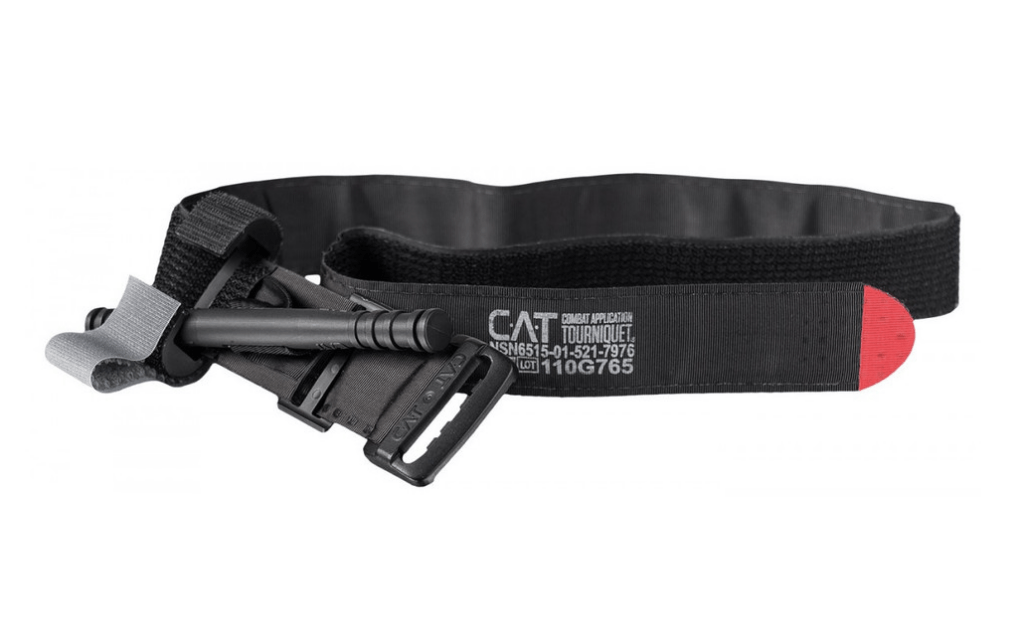
Modern first aid wisdom and instruction is the exact opposite. If you encounter an arterial wound, a tourniquet should be immediately employed to save the individual (yourself included). A tourniquet can be a simple t-shirt twisted by a wrench. However, this is not ideal. Ideally, your IFAK should include a modern, engineered, tourniquet that is a minimum of 1.5” wide, has an included lever, and opens/adjusts such that you can position it correctly as close to the proximal side of the injury as possible. It should also include a space/utility to document the time applied as this is important information to medical personnel. This device can absolutely save your life and can be employed for a long period of time contrary to old-school thinking. Upon purchasing a tourniquet, it is important to always test its breaking point as this tool is a lifesaving item, you want to make sure the lever doesn’t break easily when being tightened. Tourniquets are also great for your EDC (everyday carry) they are proven to save more lives than handguns.
We strongly recommend writing a time when the tourniquet was applied and if a tourniquet is covered by a thermal blanket right a “T” mark on the forehead of your casualties. Prime Armor offers Combat Application Tourniquets on our website to make a purchase follow this link: https://primearmor.us/product/combat-application-tourniquet-c-a-t/
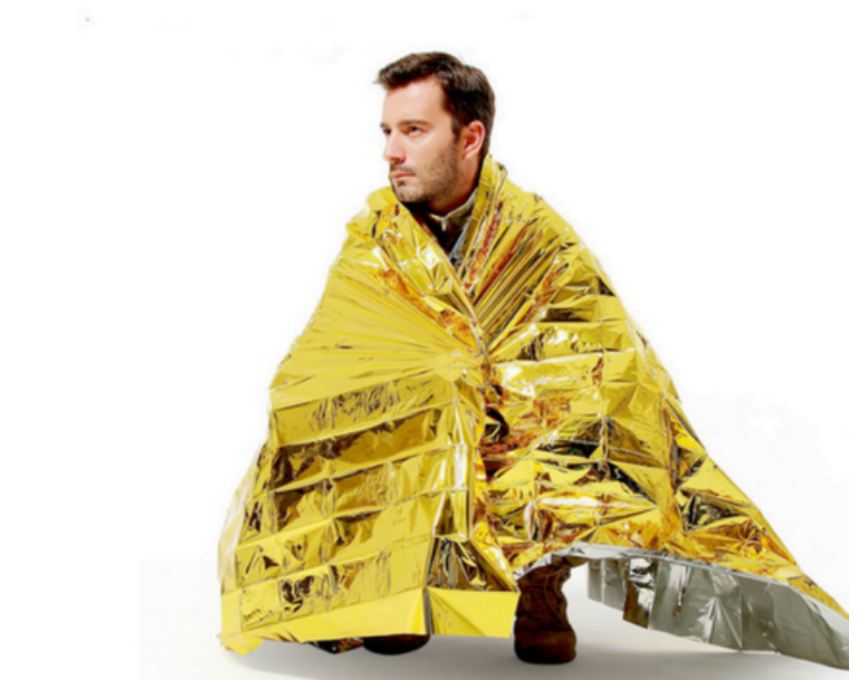
2. Thermal Shock Blanket
One of the leading causes of death in trauma is shock. A person can go into shock even if the injury does not seem critical. Conventional training is to keep the patient focused and, more importantly, warm. A thin mylar blanket serves to keep a patient warm and avoid shock. The aluminized mylar reflects body heat and results in a less bulky and heavy blanket that is extremely effective in first aid prevention of shock. Having this in your IFAK also allows it to do double duty as a survival blanket in cold weather. This is a great addition to your kit for not a lot of weight or cost.
3. Combat Gauze
The need for gauze in first aid situations with an open wound cannot be overstated. Even if the wound requires a tourniquet, gauze will likely be employed. So no list of critical items for an IFAK would be complete without listing gauze. Buying the right type of gauze for your kit may be overwhelming with the amount of options to choose from. In general, any type of gauze should work for its original purpose, however, others have different preferences. There is your basic medical gauze, fine mesh gauze, wide, narrow, and combat. The truth is you need a bit more than one kind.
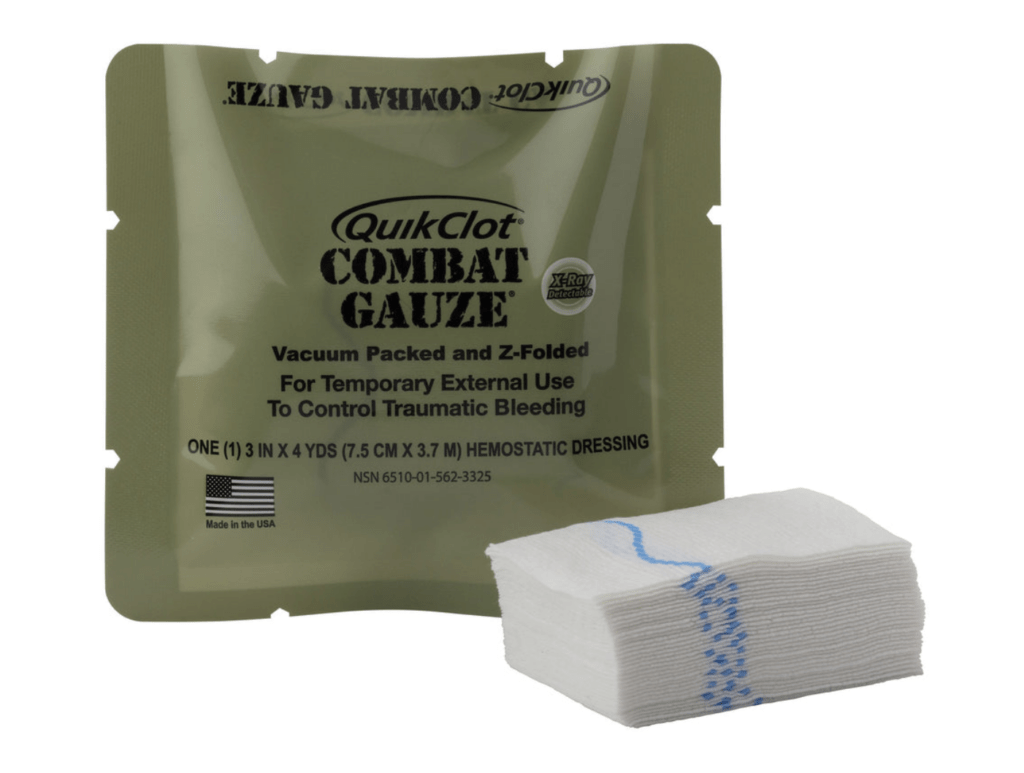
However, it is imperative that some of your gauze stash be combat gauze. The key element of combat gauze is that it is infused with a quick clotting agent. This is effective in stopping bleeding whether wrapping with direct pressure or packing a wound and wrapping. As with a tourniquet, stopping bleeding is imperative in a trauma situation. Combat gauze is one of the best ways to accomplish this sort of tourniquet.
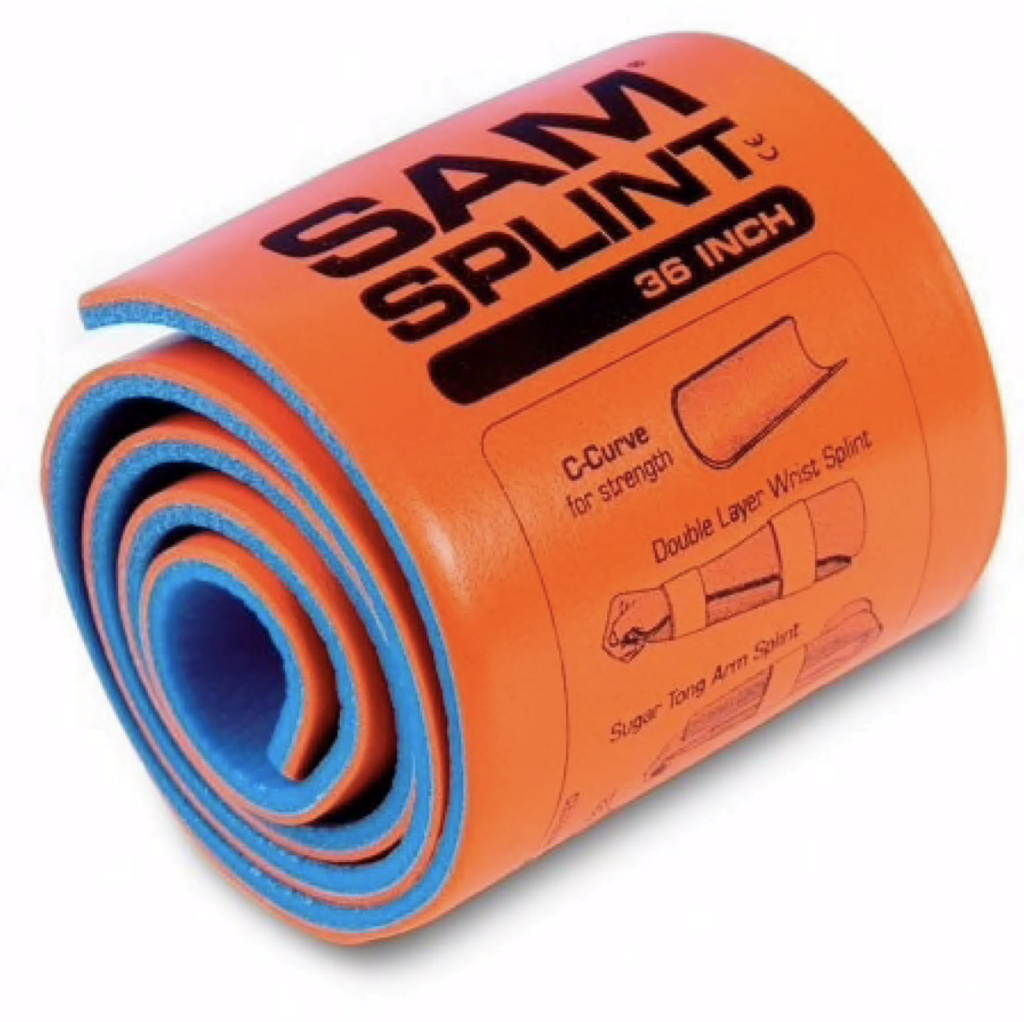
4. Splints
Broken bones need to be stabilized for several reasons. Mainly to prevent pain due to them moving and impacting surrounding nerves – in general, to avoid further damage. The immobilization is accomplished through a splint. A splint can be as simple as a couple of sticks or boards aligned down the sides of the fracture and secured with anything from duct tape to baling wire. There are more sophisticated options that pack neatly into a first aid kit though. Air splints are light, take up only a small space, and conform to the appendage that is broken. When inflated they hold the limb securely and provide cushion. There are also preformed plastic and neoprene splints that conform to the appendage. These are also lightweight but can be much bulkier in your IFAK.
5. Chest Seal.
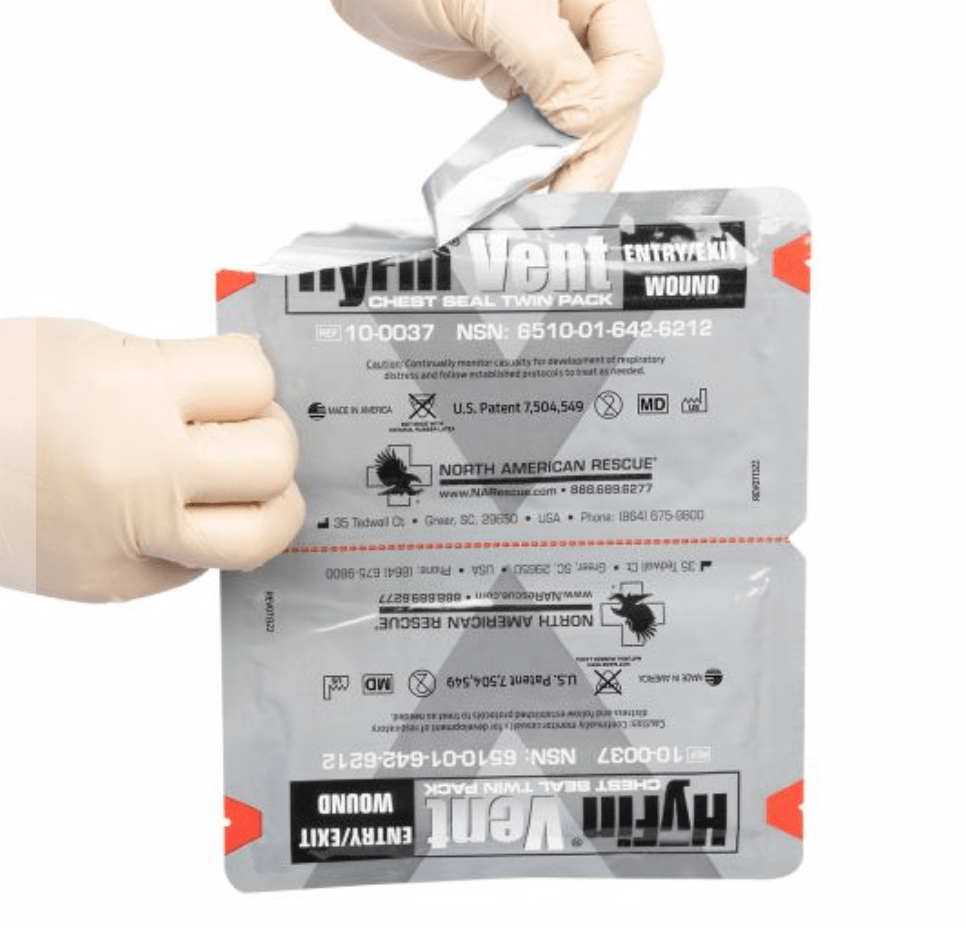
Chest Seal is a must-have and should be standard for combat medical pouch for the prevention, management, and treatment of an open and/or tension pneumothorax potentially caused by penetrating chest trauma. The two individually packaged seals are designed to allow the user to apply a seal to both an entry and exit wound. Yes, you need two seals because bullets tend to penetrate soft tissue and you might end up dealing with two wholes instead of one, so two seals for front and back. The innovative design of modern applications provides 3-vented channels designed to prevent airflow into the chest cavity during inhalation while allowing air to escape through the vent channels during exhalation. The 3-vent channels are designed to allow blood to escape and also provide a backup fail-safe system, as even if two of the three channels become obstructed, the vent is designed to remain fully operational. Packed in an easy-to-open package chest seal is created to austere environments where the casualty may be covered in blood, sweat, body hair, or other environmental contaminants when a reliable chest seal is very important.
We recommend an American-made chest seal from North American Rescue.
6. Endotracheal (Airway) Tube
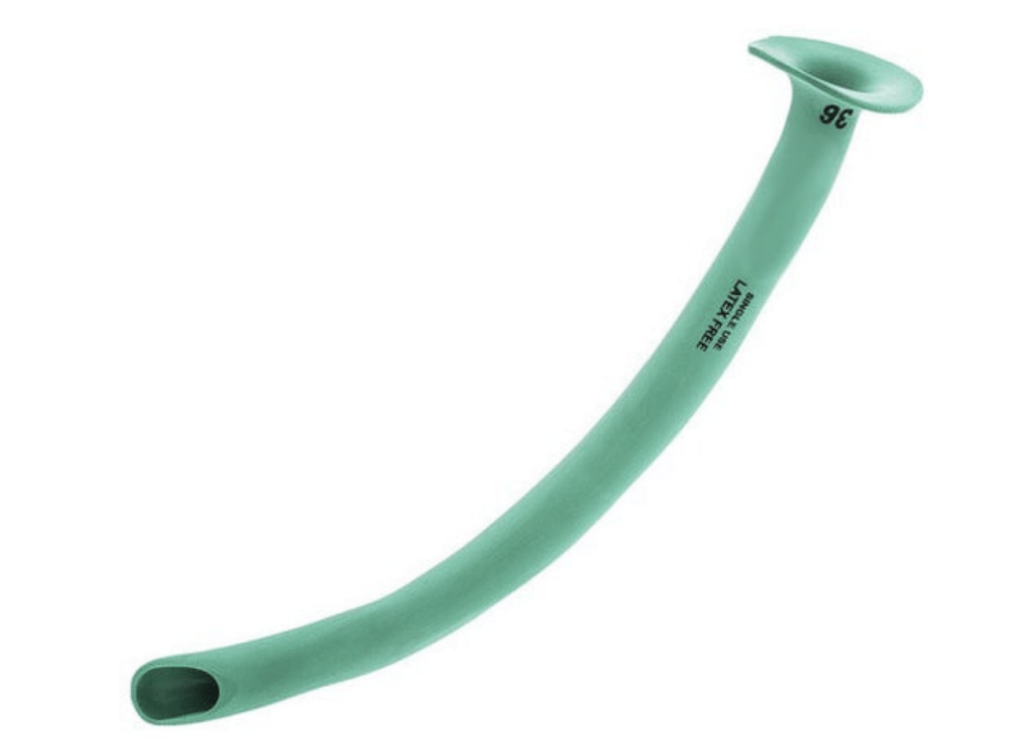
A crushed or impaired airway can be an immediate killer. Airway management is vital in emergency situations and very time critical. One of the best ways to establish a clear, manageable, airway is with an airway tube. This clear plastic tube can be inserted through the nose (depending on the type) or mouth past any trachea obstructions. Sophisticated airway tubes come with inflatable cuffs to enlarge the airway and block gastric regurgitation from entering the airway. These are a bit more “professional” but can be employed. A simpler tube can be just as useful. You can attach a bladder to the tube to inject air or simply do it orally. Whatever type you include should include a lubricant with the kit so it is more easily inserted in stressful circumstances. Airway management is important and no IFAK is complete without an endotracheal tube.
7. Quick Cloth
QuikClot is Bleeding Control Dressing is Z-Folded and measures 3″ x 4 yards. Such hemostatic dressing is designed to stop bleeding from superficial wounds, minor cuts, and abrasions. The Quik Clot Dressing uses the same fast-acting technology adopted by the US military to save lives (QuikClot Combat Gauze). This Bleeding Control Dressing works fast by accelerating the body’s natural clotting process using a proprietary, inert, inorganic material impregnated into an easy-to-use gauze that will not break down or fall apart under pressure. The Bleeding Control Dressing helps blood clot up to five times faster than a non-hemostatic dressing and it can control bleeding within minutes of application. The Bleeding Control Z-fold Dressing comes packaged in a rugged, easy-tear pouch that is durable and easy to identify. The product is lightweight and small but contains 4 yards of hemostatic-impregnated gauze in a Z-folded configuration for maximum bleeding control.
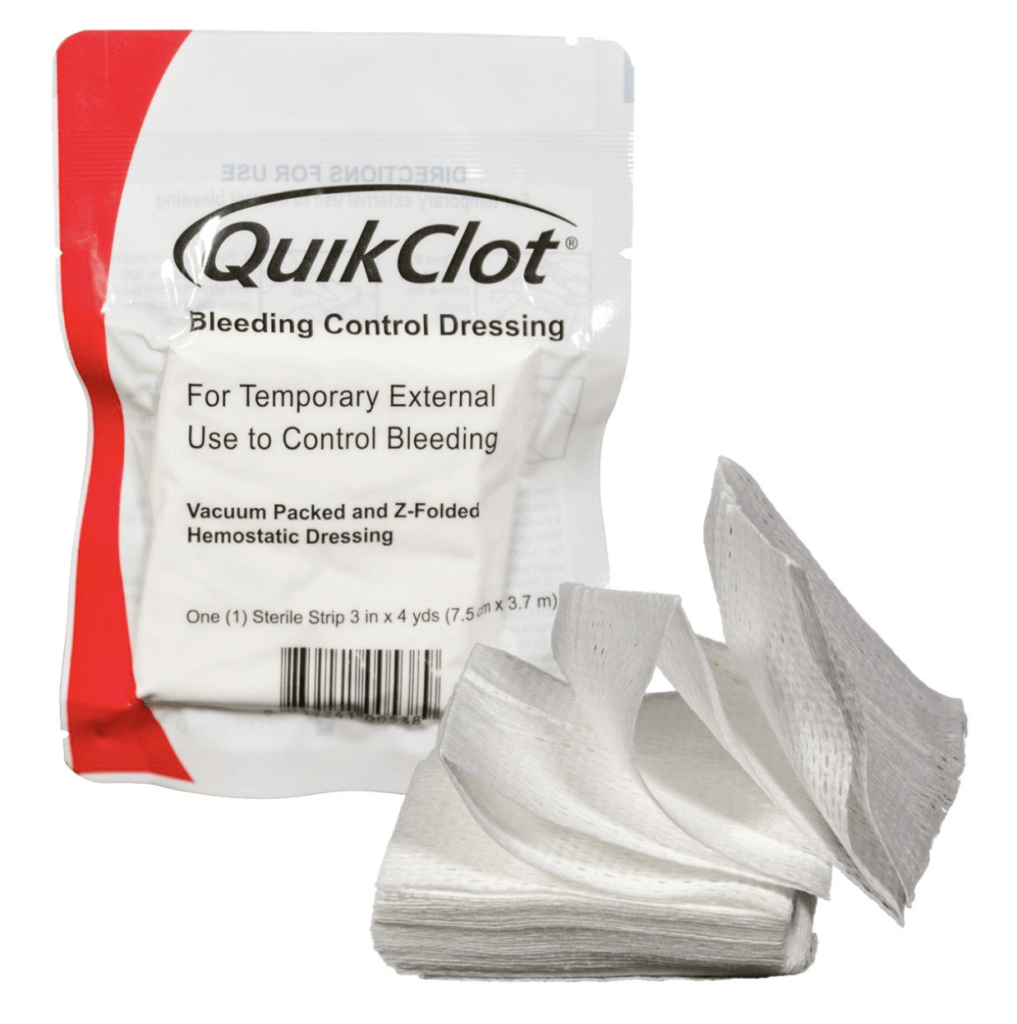
- Advanced hemostatic agent combined with the simplicity of gauze
- Z-Folded and Vacuum Packed for easy application
- Intended for temporary external use to stop bleeding of superficial wounds, minor cuts, and abrasions
- Fast-acting technology
- Inert and Non-allergenic
- Utilizes the same inorganic component as QuikClot Combat Gauze® which is used by the US Military to control severe bleeding
8. Pressure Bandage
Generally, Pressure Bandages are designed for fast response to severe bleeding and trauma situations. Such bandages can be used This Emergency High Strength Pressure Bandage (tourniquet) combines a thick non-adherent dressing, elastic bandage, pressure applicator, and closure clip in one simple unit. The bandage is also a tourniquet that gives you an effective wound dressing that is quick and easy to apply without the need for tape, safety pins, or other bandages. Also known as an Israeli bandage.
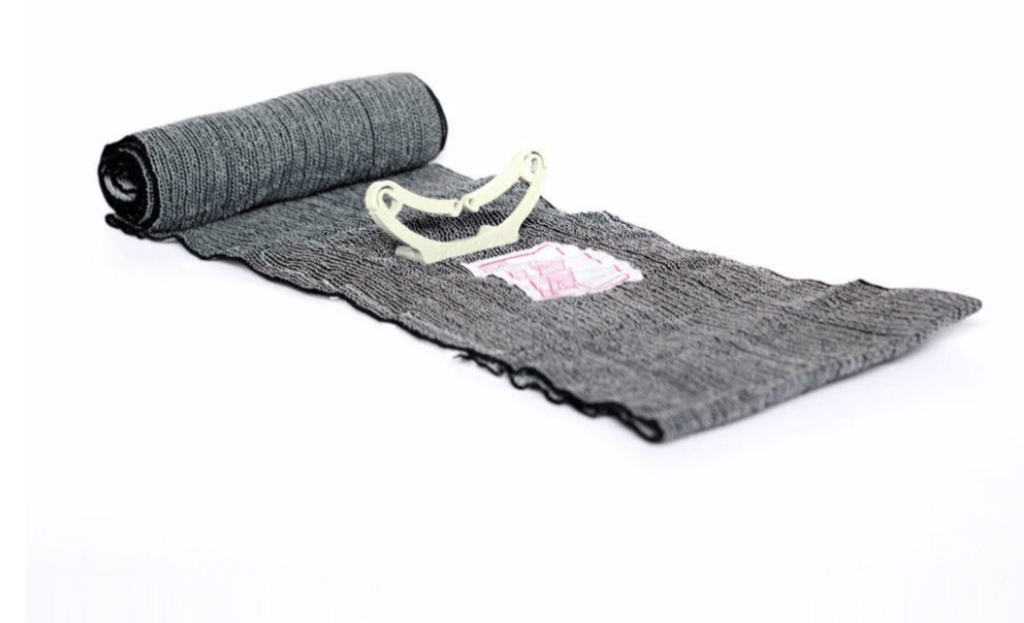
- Combines a thick non-adherent dressing, elastic bandage, pressure applicator and closure clip in one simple unit
- Quick and easy application
- Sterile
9. Hydration Supplement
This might be not the most important part of your IFAK but definitely, a must-have for the SHTF type situations when there is no sense in calling 911. Dehydration can be a killer but typically not immediately. However, symptoms and effects of dehydration can begin to appear within a day. Dehydration is a vicious downward spiral that leads to poor decision-making and eventually, weakness that does not allow enough strength to rehydrate. Dehydration is typically a factor in survival in a remote or wilderness environment but can also be a factor in a traffic accident where trapped and not accessible or in a catastrophe like a collapsed structure.
Adding water and a hydration multiplier is a great addition to your IFAK.
10. Pair of Trauma Sheers.
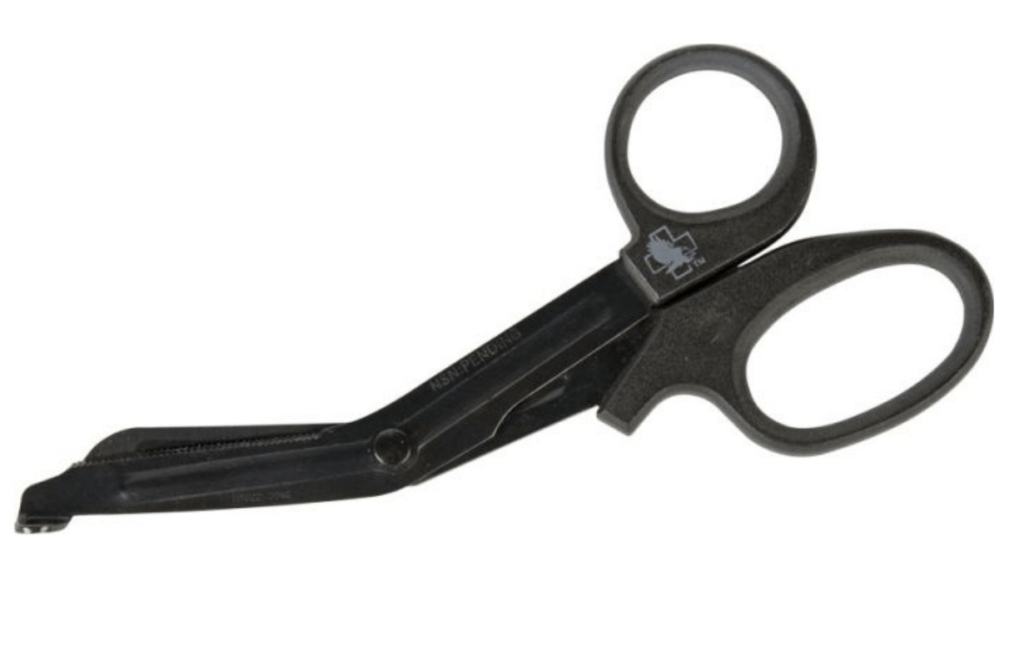
That’s right two is one and one is none. This a very important item for your IFAK, I would even recommend this item for your EDC, since trauma sheers are used pretty often during car accidents, and knife or handgun assaults.
Bonus Item: Automatic Emergency Defibrillator (AED)
Another SHTF item that might now be necessary for your IFAK all the time but definitely worth mentioning. Cardiac arrest can happen at any time and is a serious life-threatening situation. If you are far from medical assistance you might have to perform CPR for a very long time. It can be extremely tiring and becomes less effective after just a few minutes. Having an AED to reestablish cardiac rhythm can save a life. These devices can be expensive and heavy so it is arguable as to whether that is part of an IFAK but when needed, they are one of the greatest life-saving devices invented.
Let the Preparation Begin
Every item listed here is arguable to a point but it represents thinking aligned with possible survival scenarios. It is important to consider your likely situations and the group you might be surviving with. For example, if someone in your group is a diabetic, it might be more important to include glucose tablets or insulin in your kit. As with any preparation, the key is to plan ahead and tailor your gear to you. First aid knowledge and a kit are as important as knowing how to use a firearm and will likely be used much more often. Get that IFAK built and be prepared!
Written by: Rachelle Fritz